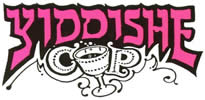CLARINET CONVENTIONS
Clarinet players are sometimes a bit behind the times. If you subscribe to The Clarinet magazine, you’ll see. There are a lot of photos.
Toodles in ’12. Benny Goodman for President.
Many clarinetists, myself included, mimic Goodman. He’s the latest thing. We stand ram-rod straight, wear suits, and have facial muscles twisted tighter than model airplane propellers.
U.S. military band clarinetists are a subspecies of clarinet antediluvians. They are all sergeants for some reason. These soldiers aren’t shimmying under any barbed wire fences for you. They’re busy practicing, trying to get into The Clarinet magazine.
Clarinetists gather annually at Clarinetfest, Clarinetopia and Clarabell. (The last one is made up.) At these conventions, the workshop leaders are called clinicians. They come from SMU, KSU and OSU. Has to have an S in it. The clinicians teach college students how to become clinicians.
When I was a clinician at the Ohio Music Educators Association conference, I was a bit light in the bio department. No “B.M. from SMU,” no “soloed with the Wyoming Symphony,” no “studied with Hans WorseThan Most.”
I wrote I was the clarinetist and leader of Yiddishe Cup.
***
Not every clarinet player looks like an insurance agent. There’s Don Byron, the black guy with dreadlocks, and Paquito D’Rivera, the Cubano humano. Plus there are at least a dozen curly-haired Jewish clarinetists who look like Larry Fine from the Three Stooges. The principal clarinetist of the Cleveland Orchestra, Franklin Cohen, is a Larry Fine impersonator. Me too.
A black acquaintance, who ran into me in a restaurant, said, “Hi, Frank.” I corrected him, and the black man blushed, sort of.
I played two surprise birthday parties for Frank Cohen. Those were scary affairs because at least eight clarinet players were at each gig. Some of the clarinetists played “Happy Birthday” in a clarinet choir, which is similar to a vocal chorus, except it’s all clarinets: big, medium and little clarinets.
I, too, own a small clarinet — a C clarinet. The C is more piercing than the standard Bb horn, which is my main axe. (Bb is what everybody is familiar with.) There are also Eb clarinets, which are smaller than Cs. And even more obscure key clarinets.
The thing I never understood about music: Why all the different keys? Just get rid of some of them. Pare down.
Sid Beckerman, the legendary klez clarinetist, said, “To you, D minor is a key. To me, it’s a living.” D minor is the key of choice for klezmer clarinetists.
And what’s with transposing? If a clarinetist plays with a pianist or guitarist, the clarinet player has to play different notes than the ones written on the page.
I’m pretty good at it. When I see a written “C,” I can play “D” on the clarinet. It took me a while. It’s like a Swede learning Danish.
Here’s what is impossible: transposing quickly on the alto sax. When you see “C,” you play “A,” the relative minor. If the tune is incredibly slow, like a waltz, it’s doable.
Transposition keeps the riff-raff and dabblers off the bandstand. Just like in Judaism, where the prayer book goes backwards and the rabbi skips chunks of prayers and jumps around in the book without telling you. Just to make it hard.




3 comments
Thanks for the drasha on clarinetism and its practice (nice pun?), Bert.
Just because churches and Reform synagogues print out their services in detail, doesn’t mean that the oral (not Roberts) tradition is a slacker. Many rabbonim announce the page numbers, even when the population is composed of regulars.
As for skipping, you understand that the siddur (book with the service printed out — sometimes bilingually) must cover every occasion. Therefore, it needs parts for holidays and special occasions as well as regular sabbath services. None can afford anything else.
Back to clarinets. In one of your future lectures, please comment on reeds and dealing with the significant humidity that develops inside a clarinet while playing, not to mention environmental hazards for wind instruments.
I am in the transposition business as well. I have a 42-year history of guitar in my DNA.
In the last six years I have been performing and teaching on the ukulele. The four strings of a uke are tuned exactly like the top four strings of a guitar, but a fifth higher. So if you make a “D” chord shape on a uke, you are playing a concert “G” chord.
When I teach at music camps I can transpose on the fly. That’s early in the week. By the time Friday rolls around — or if it’s after midnight — forget it. My mind turns to mush.
In Canada they tune their ukes to D (C is standard in the USA). When I taught in Canada, I was mush on Monday.
Hilarious. I’ve never played a transposing instrument and never will. Low brass players play B-flat instruments, yet they are taught to play in concert pitch. There’s no reason why clarinetists and sax player couldn’t be taught that way as well.
Leave a Comment